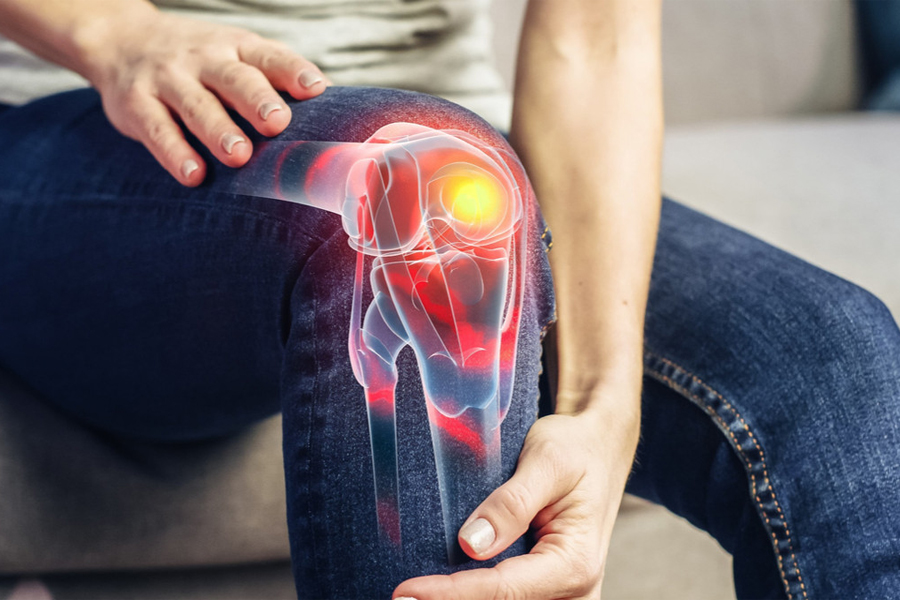
Knowledge of the genetic contribution to orthopaedic defects is critical for diagnosis, therapy, and patient prognosis. Inherited or genetic, we are all born with our unique musculoskeletal system; some of us are born with natural challenges, which may range from congenital deformities to predisposition to degenerative diseases and inherited genetic factors that can contribute to one’s musculoskeletal health.
This blog discusses how genetic differences influence orthopaedic conditions, review typical genetic musculoskeletal conditions, and emphasizes practical strategies for minimizing risk and handling these disorders.
Genetics and Orthopaedic Health
DNA, the blueprint for the proteins that build and maintain tissues, is in every cell of the human body. The researchers say that alterations in particular genes can affect how bones are formed, remodeled, and healed, influencing the risk for many bone and joint diseases. Although lifestyle, nutrition, and environmental etiologies are central, genetic predisposition frequently forms the basis for many musculoskeletal disorders.
Genetics and Orthopaedics: How the Two Are Related?
Bone Formation and Density
- Genes determine the activity of osteoblasts (bone-forming cells) and osteoclasts (bone-resorbing cells).
- Mutations in the COL1A1 and COL1A2 genes can impair collagen formation, resulting in diseases such as osteogenesis imperfecta.
Cartilage Integrity
- The resilience of cartilage is due to proteoglycans and collagen.
- Variants of the ACAN gene (encoding aggrecan) are associated with early-onset osteoarthritis and chondrodysplasias.
Joint Development
- Signaling pathways (Wnt, BMP, and others) are required for appropriate joint formation in the embryo.
- Genetic mutations in these pathways can lead to congenital dislocation and dysplasia.
Muscle and Tendon Strength
- Genes like MYH7, and TTN encode myosin and other contractile proteins.
- Variants here could also increase the chance of tendon ruptures or muscular dystrophies , which secondarily impact joint functioning.
Genetic Orthopaedic Disorders
Osteogenesis Imperfects
Brittle Bone Disease. It occurs due to abnormalities in collagen genes (COL1A1/COL1A2), resulting in brittle bones and recurrent fractures.
Achondroplasia
A type of dwarfism caused by mutation in the FGFR3 gene, it is characterized by defective cartilage formation in the long bones.
Ehlers–Danlos Syndrome
A mountainous group of collagen synthesis disorders characterized by joint hypermobility and skin extensibility.
Hereditary Multiple Exostoses
Mutations of the EXT1 and EXT2 genes result in the development of non-cancerous bone growths (exostoses ) near joints that can contribute to deformity and pain.
Familial Osteoarthritis
Since OA is known to be multivariable, it has long been suspected that genetic factors play a role in cartilage damage and joint degeneration.
Genetic Determinants and Its Mechanisms
- Single-Gene Mutations: Obvious modes of inheritance (e.g., autosomal dominant in osteogenesis imperfecta).
- Polygenic Risk: Many genes pose little risk, common in osteoarthritis and osteoporosis.
From an evidence perspective, epigenetics, external forces that change gene expression without changing DNA sequence, can influence one’s susceptibility to orthopaedic conditions across a lifespan.
Diagnosis of Genetic Musculoskeletal Disease
Family History and Clinical Evaluation
- A comprehensive history may have a pattern of fractures, problems with the joints themselves, or even early arthritis.
Genetic Testing
- Targeted gene panels or whole-exome sequencing may confirm the diagnosis of, for example, Ehlers-Danlos syndrome or skeletal dysplasias.
Imaging & Biochemical Markers
- Radiographs, MRIs, and bone density studies combine with genetic findings to help predict severity and treatment.
Management Strategies
1. Preventive Measures
- Optimize Lifestyle: Weight-bearing exercise, a healthy diet, and help to quit smoking are suitable for the bones.
- Early intervention: Identification of genetic risk enables children to be monitored for early signs of loss of bone density and joint health.
2. Medical Treatments
- Bisphosphonates may help strengthen bone in conditions such as osteogenesis imperfecta.
- Other Modifiers of Growth: Agents directed against FGFR3 signaling potentially benefit achondroplasia.
3. Surgical Approaches
- Corrective osteotomies, arthroplasties, and fusions can be required for structural deformities and degenerative disorders of the spine.
- Patients will require the input of multidisciplinary teams that include genetic counseling and specialized care—such as those found at DHEE Hospitals—that can combine advanced diagnostics with customized treatment.
Future of Orthopaedic Genetics
● Gene Therapy: Experimental procedures attempt to rectify genetic defects at the level of DNA.
● Pharmacogenomics: Drug response can be tailored to an individual’s genetic profile, which could help treat long-term illnesses such as arthritis more effectively.
● Biomarker discovery: There is potential to find genetic and/or epigenetic markers that can be used to predict risk and monitor disease progression.
Conclusion
Orthopaedic conditions are influenced by genetic factors at the biological level. Although we cannot change our DNA, the early detection of these hereditary risk factors promotes the potential for personalized prevention and treatment strategies. Genetic testing, lifestyle optimization, drug treatments, and, if required, surgery can help patients retain mobility and quality of life. If you need specialist assessment, the multispecialty team at DHEE Hospitals provides holistic management, including genetics, orthopaedics, and rehabilitation.
FAQ’s
1. What is the role of genetics in common orthopaedic problems?
Genetic changes can modulate bone density, cartilage composition, and connective tissue integrity, which are determinants of fracture, arthritis, and congenital deformities, among other things.
2. Can Healthful Eating Lower a Child’s Asthma Risk?
Although genetics establish the baseline risk, exercising regularly, eating well, and not smoking can considerably reduce the influence of genetic predispositions.
3. When should I consider genetic testing for orthopaedic diseases?
If you have a family history of broken bones, early arthritis, or bone problems present at birth, please see a specialist to consider genetic testing.
4. Are there any gene-based treatments for orthopaedics?
Treatments today are symptomatic and attempt to slow the disease, but developing gene therapy and targeted medications provide hope to treat the genetic root causes.
5. How do I get more information on the management of inherited musculoskeletal disease?
Seek advice from an orthopaedic geneticist or a multidisciplinary clinic to evaluate and treat inherited bone and joint disease.
